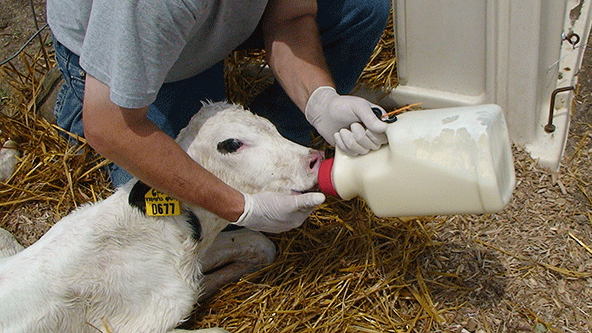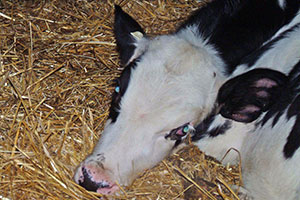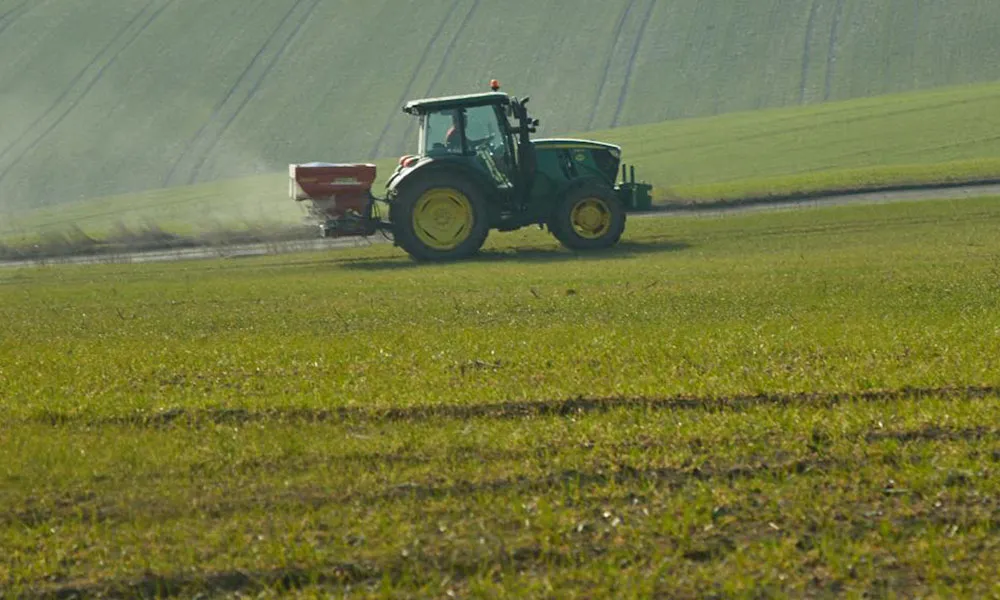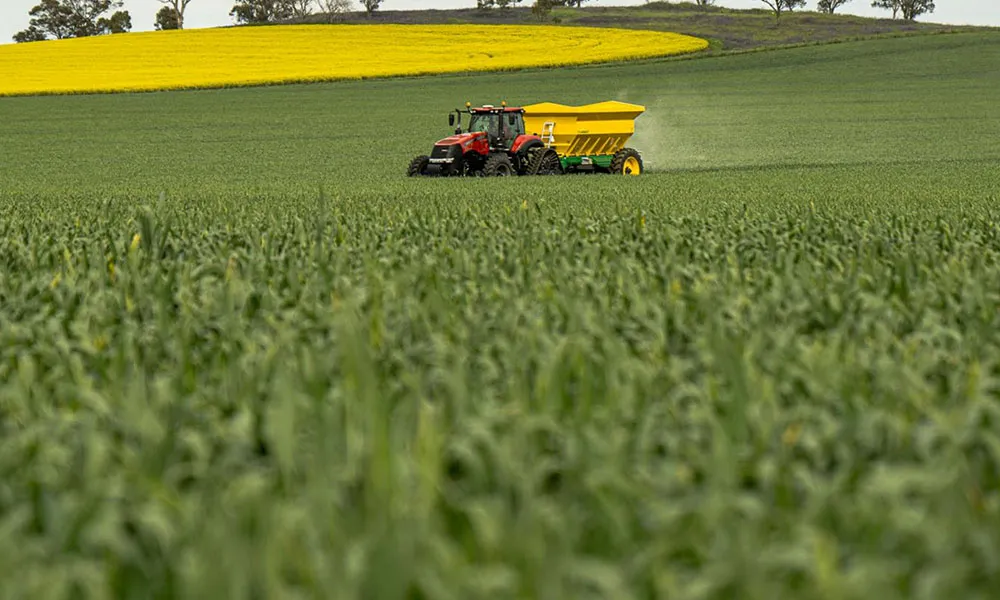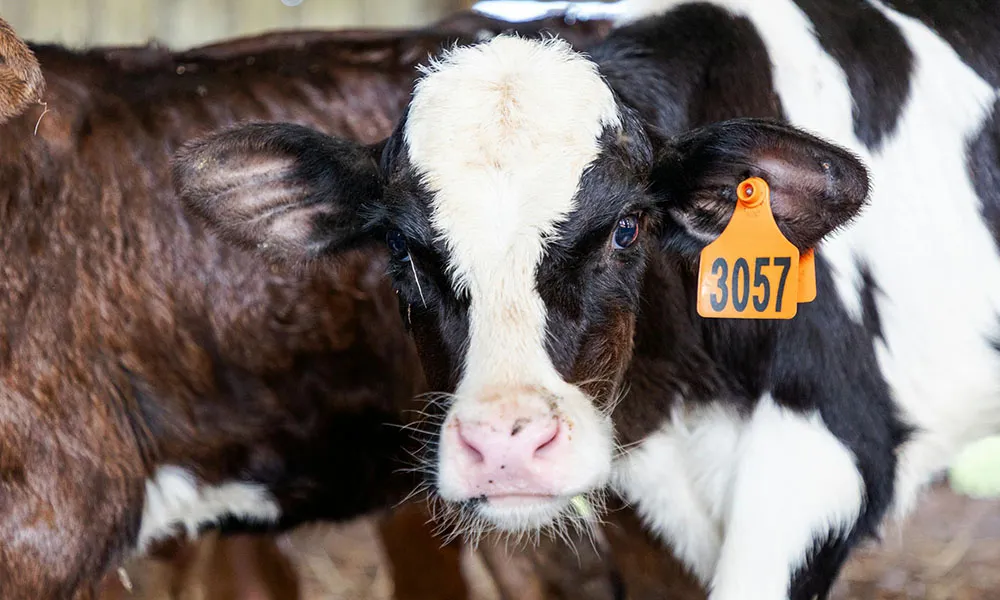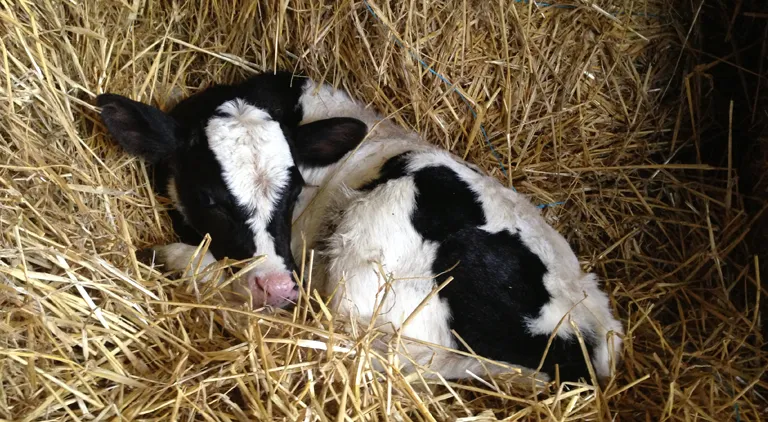
What is Scour ?
Calf scour is not a disease but is a symptom of a disease which can have many causes.
It results from a badly damaged gut, which leads to a loss in function of the intestine.
An intestine that is not functioning properly causes the calf to lose fluids in the form of diarrhoea.
Once the damage is done, the calf will continue to scour until the intestine is repaired.
No treatment is available to speed up this repair time.
In most cases it is dehydration or starvation that kills the calf, not the disease organism that triggered the scour.
What causes calf scour?
Scour in young calves is caused mainly by parasites and viruses.
These infectious agents damage the lining of the intestines, so that water and electrolytes cannot be absorbed effectively.
A number of infectious agents can cause scour in calves. 
It is not possible to tell from the appearance of the scour what has caused it.
Fresh whole milk or good quality milk replacer given in reasonable portion sizes does not cause scour.
Scour is rarely caused by nutritional reasons ( over feeding, poor quality milk replacer).
The diarrhoea testing kit can be a useful kit to test for traces of Rotavirus, Coronavirus, E Coli and Cryptosporidium and help diagnose the underlying problem so you can determine the best course of action.
How can you prevent calf scour ?
Prevention is always better than cure and the single most important action that farmers can take to reduce scour on their farm is proper colostrum management.
Feed Colostrum properly
Good colostrum management is the single most important action that farmers can take to reduce scour on their farms. New born calves rely totally on a supply of colostrum for the provision of antibodies to help fight against infection. The calf gets the best absorption from colostrum within the first 6 hours after birth.
Ideally a new born calf should consume about 2 litres of colostrum within the first 2 hours of life. Where a calf is weak from calving, then colostrum can be fed either with a bottle and teat or a stomach tube. Give 2 ltrs immediately after calving and a further 2 ltrs after 6 hours. For a calf to take in 2 ltrs of colostrum, it must suckle for at least 20 minutes.
Introduce and maintain dry clean housing.
Good hygiene is always critical.
By reducing the infectious pressure that the calf is exposed to in the early days of life is crucial for the health and thrive of the calf. Keeping the calf clean, dry and comfortable and free from stress is important through all stages of calf rearing.
Some basic hygiene rules:
- Individual calf pens should be cleaned out between calves.
- Clean, dry bedding wherever your calf is housed. Generously top up straw beds.
- Get on your knees, the bed needs to be dry enough so that your knees do not get wet
- Disinfect with an effective disinfectant ie Virkon s or Kilcox are both effective products to combat infection.
- Don't forget to keep feeding equipment clean.
How should you treat a calf with scour?
Separate the scouring calf - Biocontainment.
By removing the calf from the group helps to reduce the spread of infection and also gives the calf a better chance to recover.
Calves with scour are losing more fluids than they are consuming. A normal healthy calf will consume 4 litres of fluids per day. A scouring calf will need an additional 4 litres to replace the lost fluids.
Do not withhold milk as this will lead to starvation. Starvation delays a speedy recovery and continued weight gain. Allow the calf to feed on milk as normal. Give two extra feeds of a good quality oral rehydration / electrolyte i.e. Lectade, Sacrolyte or Rezult. These two feeds should be fed independent of the milk feeds, e.g. at lunchtime and late in the evening. You can safely give these solutions by stomach tube if the calf refuses to drink. However giving milk by stomach tube is not advised as it can lead to damage of the rumen lining ( rumenal acidosis)
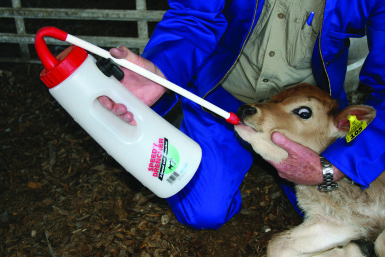
Calf About To Be Fed With Stomach Tube
Electrolytes should be mixed with clean warm water ( hand hot). Always read the label before using to ensure you mix to the correct concentration. Early intervention with an electrolyte solution will give a quicker and more reliable result. If there is a possibility that the calf is about to start scouring, giving an additional electrolyte feed will do no harm and may give you a head start with a calf that is just beginning to have a problem.
Antibiotics should only be given if the calf has a high temperature and looks very sick.
Antibiotics do not work against viruses or parasites.
If antibiotics are used when they are not needed, there is a good chance that they won’t work when they are really needed.
When should you call your vet?
- If the calf is down and unable to stand up / very weak
- If the calf refuses to drink several feeds in one day
- If the eyes are sunken in the head from dehydration
- If the temperature is above or below the normal range (38.5 - 39.5 C)
If you have an ongoing serious problem with a calf scour problem on your farm, look into colostrum, nutrition and hygiene management and seek a veterinary diagnosis.
We Would like to thank Team LM and Animal Health Ireland for their valuable information in writing this blog.
For more information on scour and everything you need around your farm visit www.agridirect.ie




